 by "razorbeamteam" (razorbeamteam)
by "razorbeamteam" (razorbeamteam)
Published 10/27/2017 at 15:24
 by "razorbeamteam" (razorbeamteam)
by "razorbeamteam" (razorbeamteam)
Published 10/27/2017 at 15:24
No Tags
STARS: 2
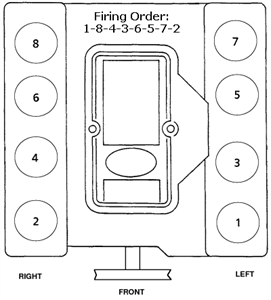
The highly anticipated results of the compression test on my range rover are in!
First, some background. I bought this car in January 2016 with 135k miles on it. The car had been sitting in a field in a field for the last 5 years and the history was largely unknown.
After about 2,000 miles of driving it throughout the summer of 2016 it was apparent that the car was in dire need of new head gaskets as all the familiar symptoms were there (sweet smelling white smokey exhaust, tell tale puddle under the engine, and even misfires under hard acceleration).
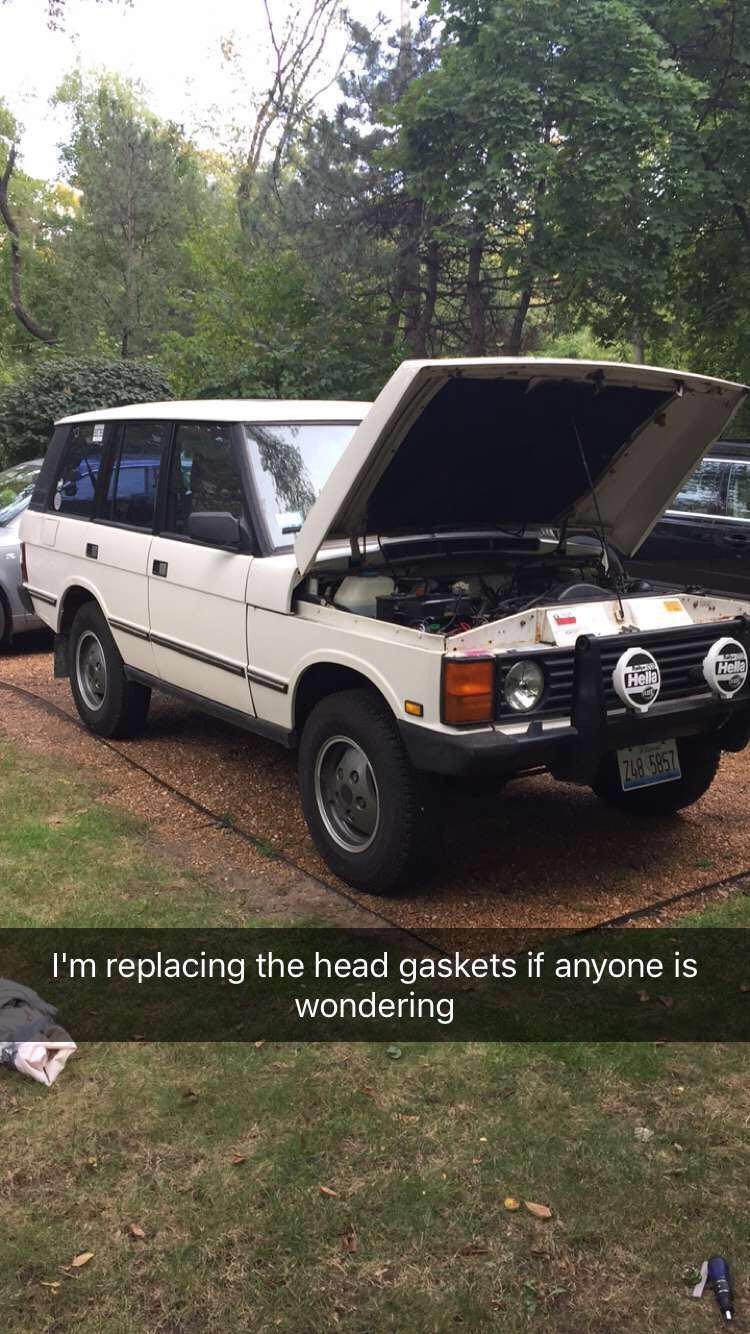
Not having any garage space at the time (October 2016), I asked a friend if I could park the car in her driveway while I worked. I anticipated 2-3 weekends to get everything done. I was very wrong. The whole process too about 6 weeks of free evenings and spare weekend days. I learned a lot along the way as there is not a ton of info available on the web, and forums are, well you know.
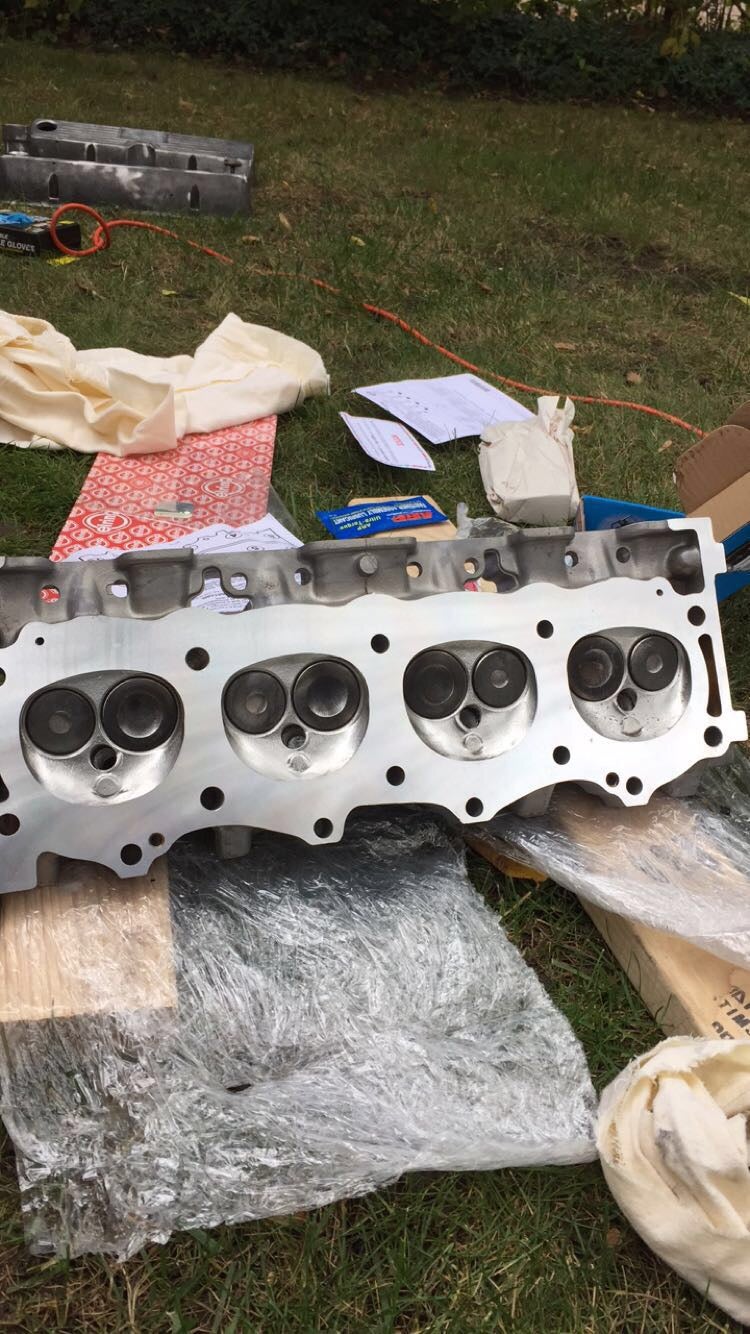
Anywho, I got everything back together and attempted to take it on a road trip to Cincinnati for thanksgiving but only made it 50 miles before a freeze plug blew out on the highway and I had to have it towed to a shop to be repaired. The shop replaced the freeze plug as well as another one that was looking questionable, then performed a leak down test (the engine overheated during the freeze plug blowout). Their consensus was that air was trapped in the system since I didnít purge correctly after the head gasket repair. The air in the system caused the thermostat to close and the pressure to build up causing the freeze plugs to blow. The leakdown test was fine and they said the head gaskets were ok.
I drove it sparingly over the winter, never really trusting it to get me very far.
By springtime the familiar sweet exhaust smell was back and it was leaking coolant under the engine again (Range Rovers, amirite?). I was obviously frustrated, but couldnít imagine that the headgaskets were bad again! I mean, I only put maybe 1,000 miles on the car all winter since the freeze plug incident.
Knowing that I needed to address the rust situation, I banished the car to a dirty garage in a questionable neighborhood so that I could really dig into it. It has been there since May and not started since then.
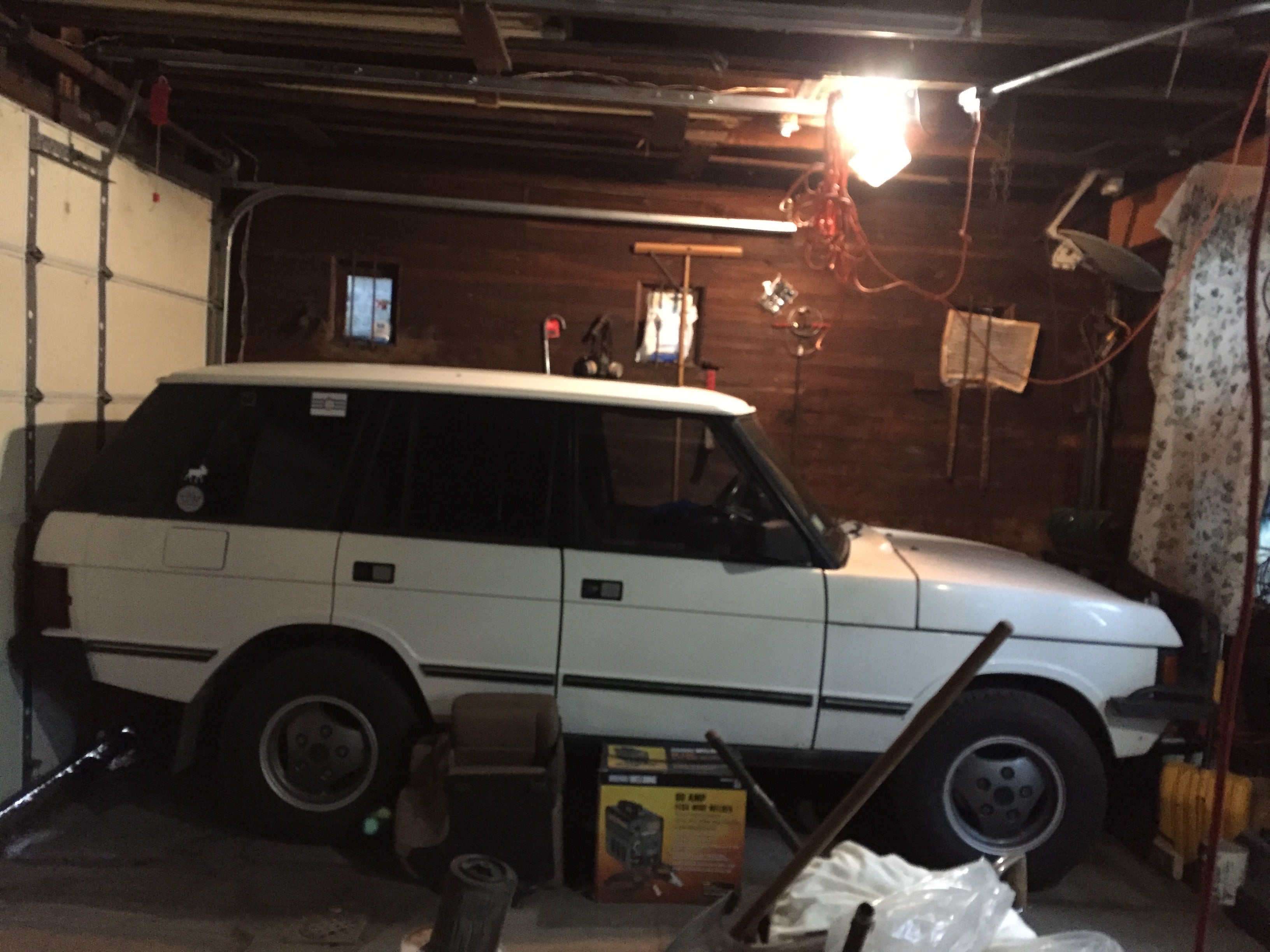
Last night, I decided to break out my compression tester and see what we were dealing with. So, without further ado, the results:
8 - 120
6 - 120
4 - 105
2 - 130
7 - 120
5 - 120
3 - 120
1 - 125
Soo, aside from #4 being a little low, everything looks to be in ok shape for a 138k mile engine with fresh gaskets. Honestly, the fitting was a little troublesome when I tested #4 so that could be what was throwing it off.
So why then are we getting coolant in the combustion? The coolant passages are on the ends of each head near #ís 8,2,7, and 1. When I installed the head studs, I did use a sealant on these outside studs, as the holes pass through the oil & coolant passages. However, the engine still had oil in it when I did this and I didnít do the best job drying the holes out. My theory is that the sealant used on these studs has failed and is allowing coolant (and possibly oil) to penetrate into the outside cylinders. Of course the only way to confirm this is to take the heads off and try again. Obviously not high on my list of things to do considering I donít even know if thatís where my issue is.
The next possibility is that the block is cracked or a liner has slipped. There were no slipped liners when I had the heads off, and I would think that either of these issues would present themselves in the compression test.
So, Iíve been ignoring this issue since the car was parked in May, but once I get this rust taken care of Iím gonna have to figure it out. Or else...
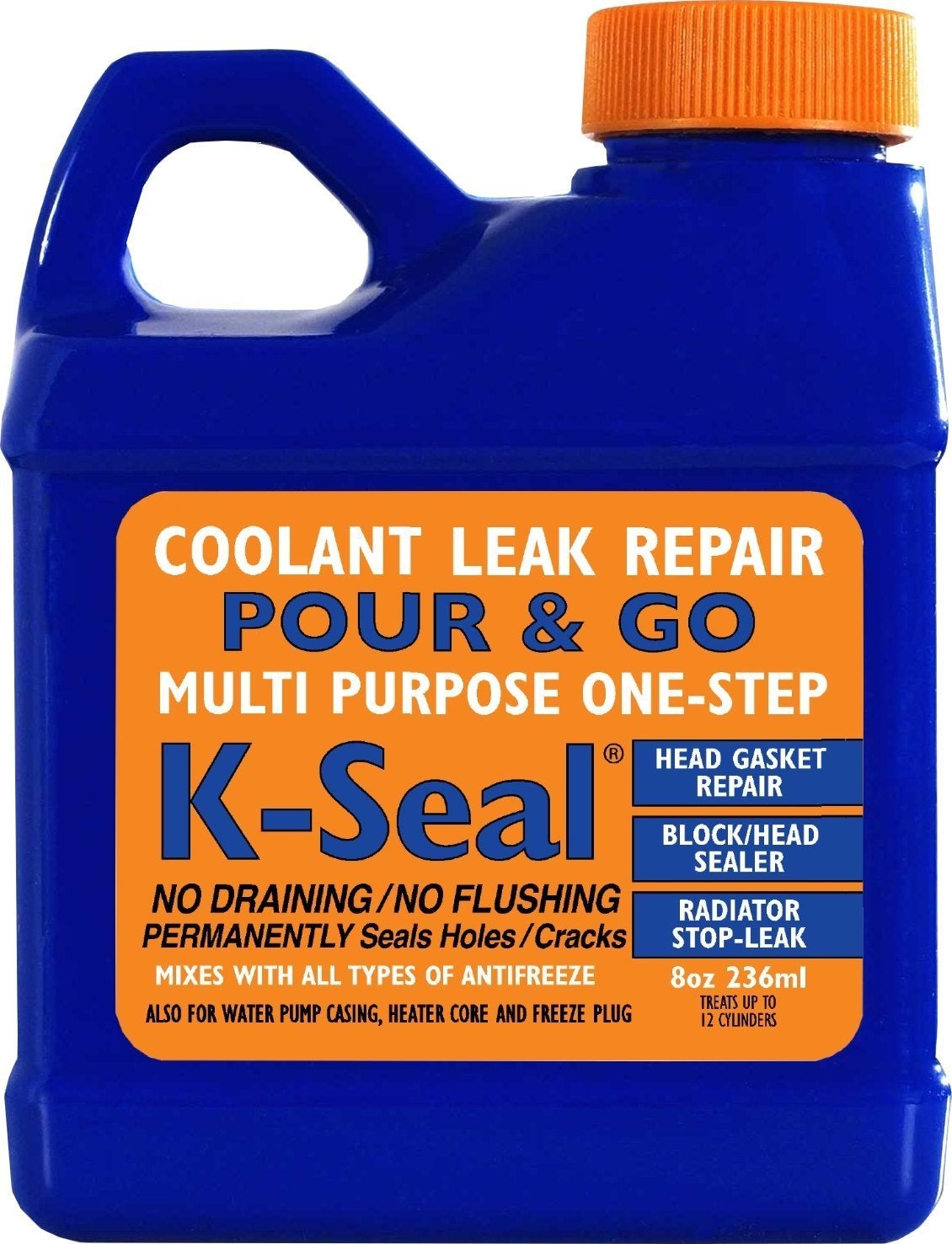
†
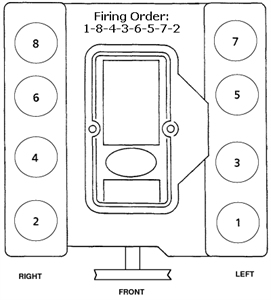
 "RamblinRover Luxury-Yacht" (ramblininexile)
"RamblinRover Luxury-Yacht" (ramblininexile)
10/27/2017 at 15:34, STARS: 1
The extra fun thing is that a liner doesnít have to slip or a head gasket to fail for there to be a combustion-to-coolant interface fail - there can be porosity next to the liner which communicates with the liner/block interface where it sticks into the chamber. Granted, thatís likely to lead to a slipped liner, but can be present without. Anyway, in your case, it shouldnít test out with good compression if you have a severe leak in anything like that.
Might be intake manifold gasket? I confess I donít know if Rovers pop them, as nearly all my knowledge has to do with the whys and wherefores of head gaskets and liners. I know Windsor block Fords do, mostly because I seem to have a little of such a leak going on... Same sort of situation (good compression, etc. et.c) except that the leak only occurs in cold running and is inconceivably tiny.
 "TheBloody, Oppositelock lives on in our shitposts." (thebloody)
"TheBloody, Oppositelock lives on in our shitposts." (thebloody)
10/27/2017 at 15:44, STARS: 1
If it was a slipped liner youíd have a noticeable ticking noise when the engine is cold.
Iím going to spitball here;
Have you checked the torque on your head bolts? What did you torque them down to on the studs originally?
Have you also checked the valley pan gasket for any leaks?
Have you done a compression test on the coolant and/or tested for exhaust gas? (there is a kit you can buy for it).
Have you pulled the spark plug from #4 to see if it has been steam cleaned? (common occurrence if the head gasket is leaking)
 "razorbeamteam" (razorbeamteam)
"razorbeamteam" (razorbeamteam)
10/27/2017 at 15:48, STARS: 0
Intake manifold, eh? I donít think there is a passage between the heads and the intake for coolant, but the intake manifold gets coolant from the radiator directly through the thermostat if I recall correctly.
 "diplodicus" (diplodicus)
"diplodicus" (diplodicus)
10/27/2017 at 15:51, STARS: 0
That cylinder counting makes no sense to me. Why would it jump back and for between banks?
 "razorbeamteam" (razorbeamteam)
"razorbeamteam" (razorbeamteam)
10/27/2017 at 15:56, STARS: 0
Like lifter tick? On a rover v8 that just means its running, right?
Well, I do have a good amount of lifter tick, which I assume is from letting the lifters dry out while I was doing the head gaskets.
I used ARP studs and torqued them down to 100 ft lbs per the instructions that came with them. Iíve read that this has been revised and that 70 ft lbs is the recommended setting. I have not checked since I put them in originally.
I have not done it, but I was told that a ďsnifferĒ test was done during The Great Freeze Plug Incident and that no exhaust gasses were detected. Might be worth doing on my own.
All the spark plugs looked pretty uniformly chalky, but... I didnít replace them after I did my head gaskets last year..... so thats on me for being cheap.
 "razorbeamteam" (razorbeamteam)
"razorbeamteam" (razorbeamteam)
10/27/2017 at 15:58, STARS: 0
Even on one side, odd on the other? I figured it was this way on all V8s.
 "RamblinRover Luxury-Yacht" (ramblininexile)
"RamblinRover Luxury-Yacht" (ramblininexile)
10/27/2017 at 16:04, STARS: 0
Thereís a passage at the front, and a passage at the rear of each head:
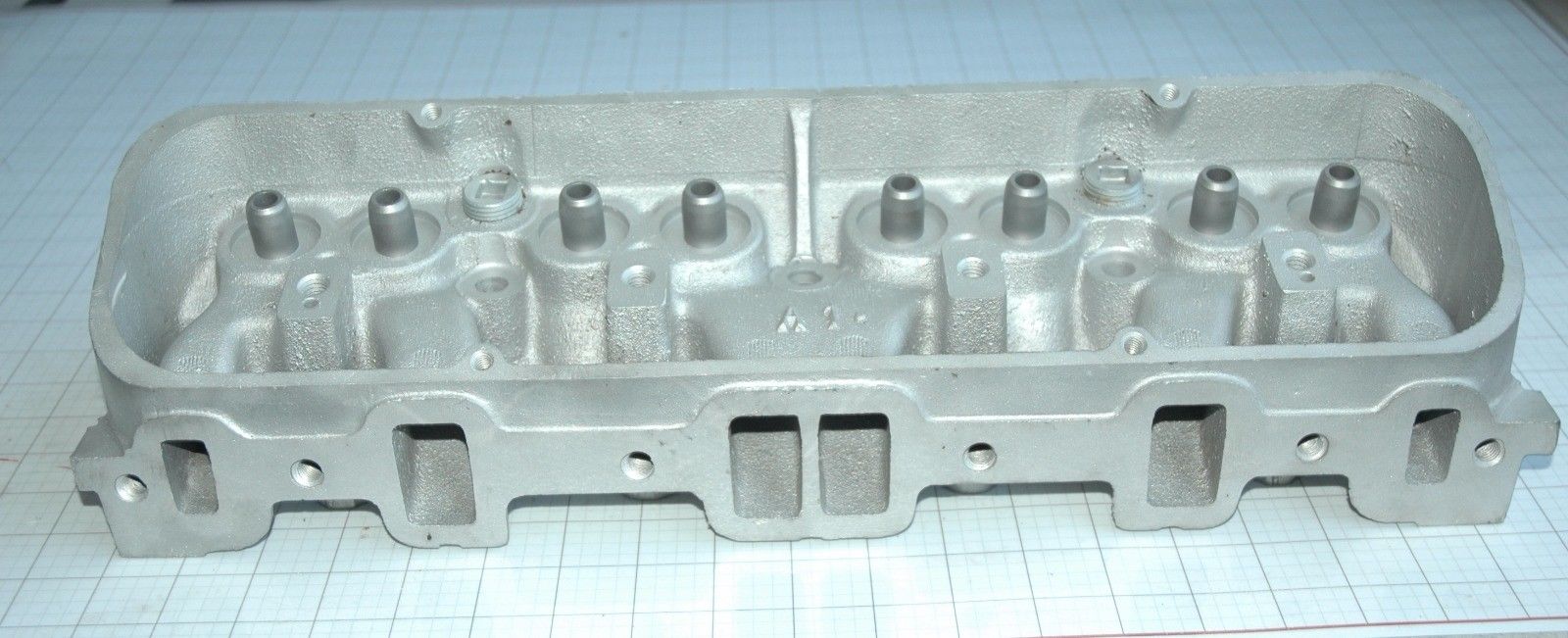
 "Chan - Mid-engine with cabin fever" (superchan7)
"Chan - Mid-engine with cabin fever" (superchan7)
10/27/2017 at 16:05, STARS: 0
I think most crossplane V8s have the same firing order.
 "razorbeamteam" (razorbeamteam)
"razorbeamteam" (razorbeamteam)
10/27/2017 at 16:10, STARS: 0
Well shows what I know. Interesting, theyíre not too close to the intake passages, but Iím not gonna rule it out. I wish there was an easy way to check for that.
 "RamblinRover Luxury-Yacht" (ramblininexile)
"RamblinRover Luxury-Yacht" (ramblininexile)
10/27/2017 at 16:15, STARS: 0
As you can see, the interface for an SBF is a little more ďasking for troubleĒ:

I couldnít remember from memory just how plausible such a leak on the RV8 was - looks like ďmostly implausible, butĒ. As I recall, the rearmost passage on the RV8 is blocked off on at least some manifolds, but obviously the passage is still there in the head...
Iím going to lean toward the possibility of a really teensy fail of head gasket near #4, though.
 "diplodicus" (diplodicus)
"diplodicus" (diplodicus)
10/27/2017 at 16:15, STARS: 0
Not the way BMW does it at least. For my 540i the bentley shows bank 1 as passenger side, starting from front 1,2,3,4 bank 2 driver side starting from front 5,6,7,8.
 "TheBloody, Oppositelock lives on in our shitposts." (thebloody)
"TheBloody, Oppositelock lives on in our shitposts." (thebloody)
10/27/2017 at 16:16, STARS: 0
So, I might have some bad news for you. I did the ARP studs on my Disco and torqued them to 100 ft lbs. A month later the head gasket blew because the studs had pulled themselves up, you might want to double check the bolts and make sure theyíre all still tight.
 "razorbeamteam" (razorbeamteam)
"razorbeamteam" (razorbeamteam)
10/27/2017 at 16:22, STARS: 0
Yeah, I may re test #4 just to confirm the tester was fitted snug, but you might be right. Could be a scratch or something on the block when I was installing it. If thats the case, well, K-Seal it is.
 "razorbeamteam" (razorbeamteam)
"razorbeamteam" (razorbeamteam)
10/27/2017 at 16:23, STARS: 0
Studs had pulled themselves up, like deformed the aluminum they were seated in? Or just loosened (please say just loosened, please please)
 "TheBloody, Oppositelock lives on in our shitposts." (thebloody)
"TheBloody, Oppositelock lives on in our shitposts." (thebloody)
10/27/2017 at 16:31, STARS: 0
As in trying to use timecerts to repair it didnít work... :/ Now granted mine is an 04 which were known to have blocks with shitty casting that crumbled and that is something I know the 3.9 didnít suffer from.
 "razorbeamteam" (razorbeamteam)
"razorbeamteam" (razorbeamteam)
10/27/2017 at 18:16, STARS: 0
Oh... well Iíll check the torque now and have my attorney draft a letter to ARP. What did you end up doing? 4.6 swap? Diesel conversion?
 "TheBloody, Oppositelock lives on in our shitposts." (thebloody)
"TheBloody, Oppositelock lives on in our shitposts." (thebloody)
10/27/2017 at 21:26, STARS: 0
Nothing yet, have a replacement block but havenít had time to work on the truck.
 "AMGtech - now with more recalls!" (amgtech)
"AMGtech - now with more recalls!" (amgtech)
10/28/2017 at 04:09, STARS: 2
Itís how Americans have been numbering cylinders forever. Being an American engine, thatís how itís numbered. When LR switched to the M62 BMW engine for Rangies from 03-05, it was numbered the way BMW numbers them.
 "AMGtech - now with more recalls!" (amgtech)
"AMGtech - now with more recalls!" (amgtech)
10/28/2017 at 11:18, STARS: 1
Have you tried pressure testing the cooling system? Aside from your perception of a sweet exhaust odor, do you have any indication coolant is being consumed in the cylinders? Iím not saying youíre wrong, but that isnít empirical evidence and I donít like jumping to conclusions (rational†as they might be considering all the issues these have) Have you thoroughly checked for external leaks? Have you checked the oil? There is a coolant passage through the front timing cover that is sealed with a cheap and very thin/narrow paper gasket that will sometimes leak coolant into the engine oil. I seem to remember one intake manifold cracking near the thermostat so it would leak a small amount of coolant into the intake runner. Porosity is a possibility, and sometimes those types of leaks only occur when the engine is at operating temperature. Slipped liners doing always show up in the compression test, donít always tick, and arenít always easily visible with the heads off.
No head bolt holes go into oil or coolant passages on these engines, FYI.
Did you install the outermost row of bolts on the heads? If so, I suggest removing them, they can cause issues because they make the clamping forces uneven.
Did you install embossed metal head gaskets or composite ones?
 "razorbeamteam" (razorbeamteam)
"razorbeamteam" (razorbeamteam)
10/28/2017 at 15:47, STARS: 0
The reason why I suspect coolant is getting into the cylinders is because if I let it idle, liquid drips out of the tailpipe and puddles on the ground under the car along with the white smoke. I havenít pressure tested the cooling system yet, but thatís a good next step.
I am planning on replacing the lifters, camshaft, and timing chain next as the lifter tick is really bad and the chain is likely stretched. So Iíll have the intake, radiator, and timing cover all removed and can check them. I need to determine if itís worth it to take the heads off when I do all that and redo the gaskets.
The gaskets are composite and the heads were skimmed by an engine shop. I didnít use the outer 4 bolts, just the 10 studs. Are you sure about no passages going into oil or coolant? I swear some holes had oil coming out of them when I put the studs in.
 "AMGtech - now with more recalls!" (amgtech)
"AMGtech - now with more recalls!" (amgtech)
10/28/2017 at 18:30, STARS: 0
Thatís all? Water in the tailpipe is a normal byproduct of the cousin and catalytic processes. If it were coolant, and enough to come out the tailpipe in liquid form, you would have hydrolocked the engine by now.
Good plan. Figure out any coolant issues for certain if you can first.
100% positive. Oil and coolant goes into those holes when you take the heads off. The bolt holes are totally blind. Trust me, Iíve had dozens and dozens of these apart.
 "diplodicus" (diplodicus)
"diplodicus" (diplodicus)
10/30/2017 at 08:07, STARS: 0
interesting.